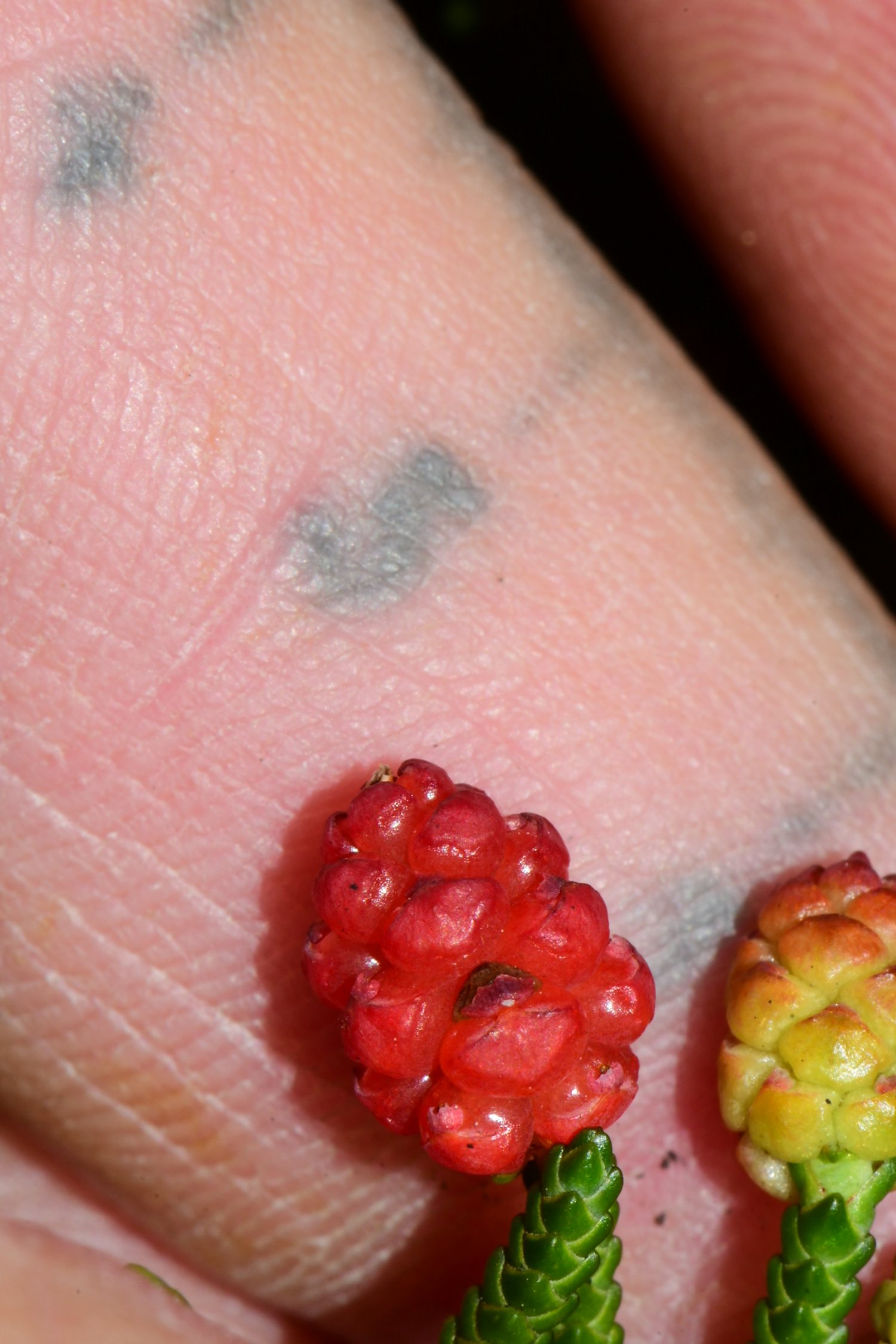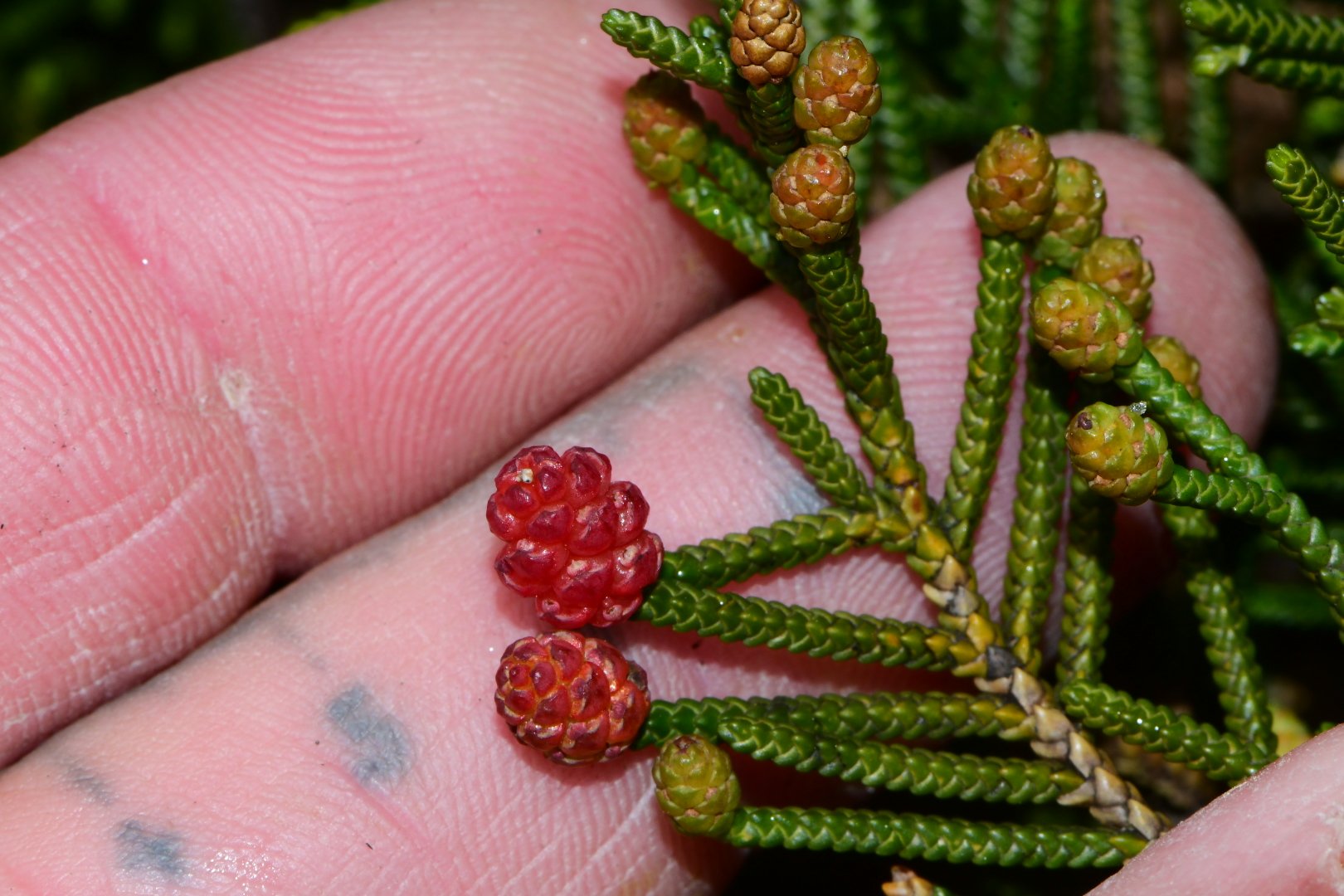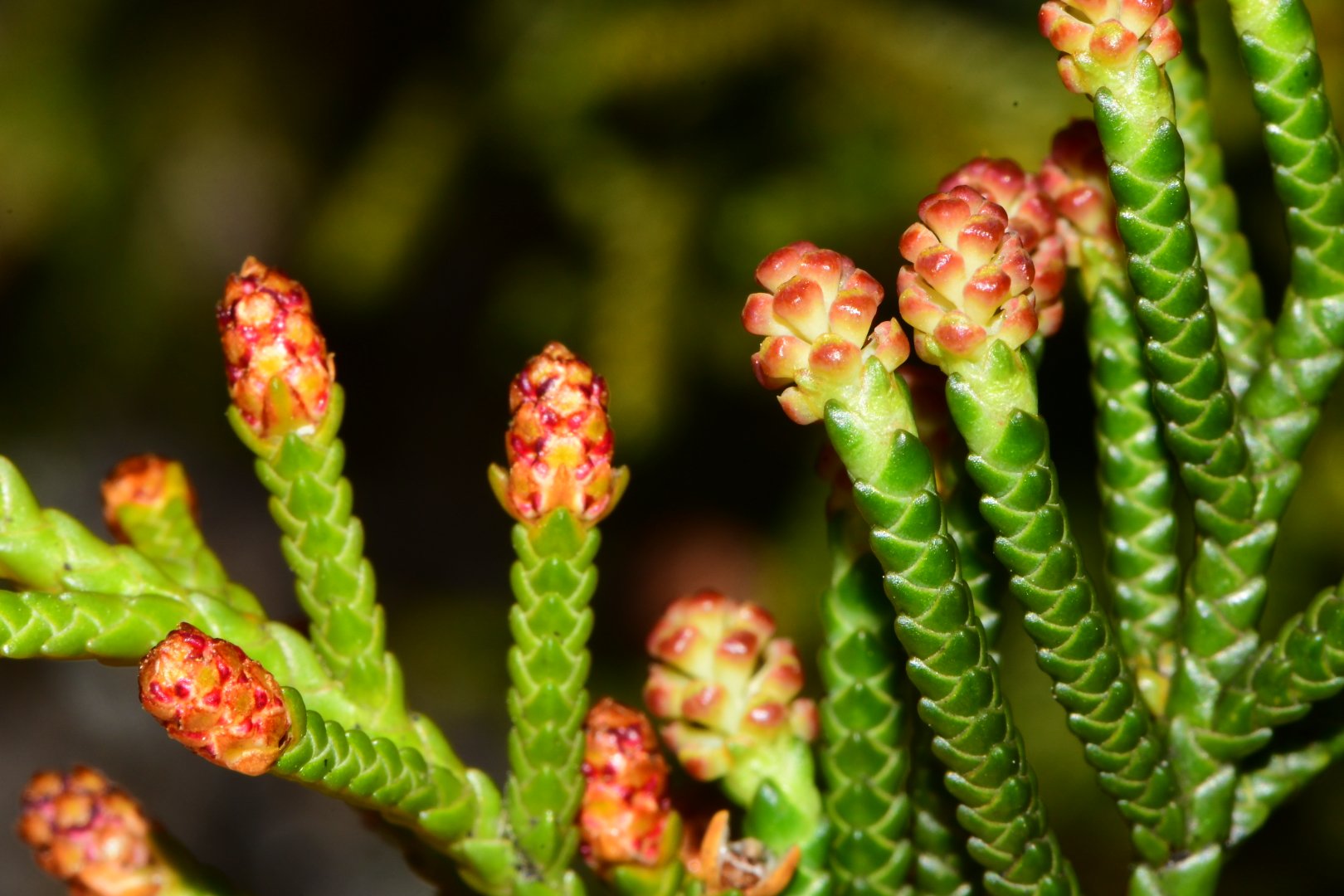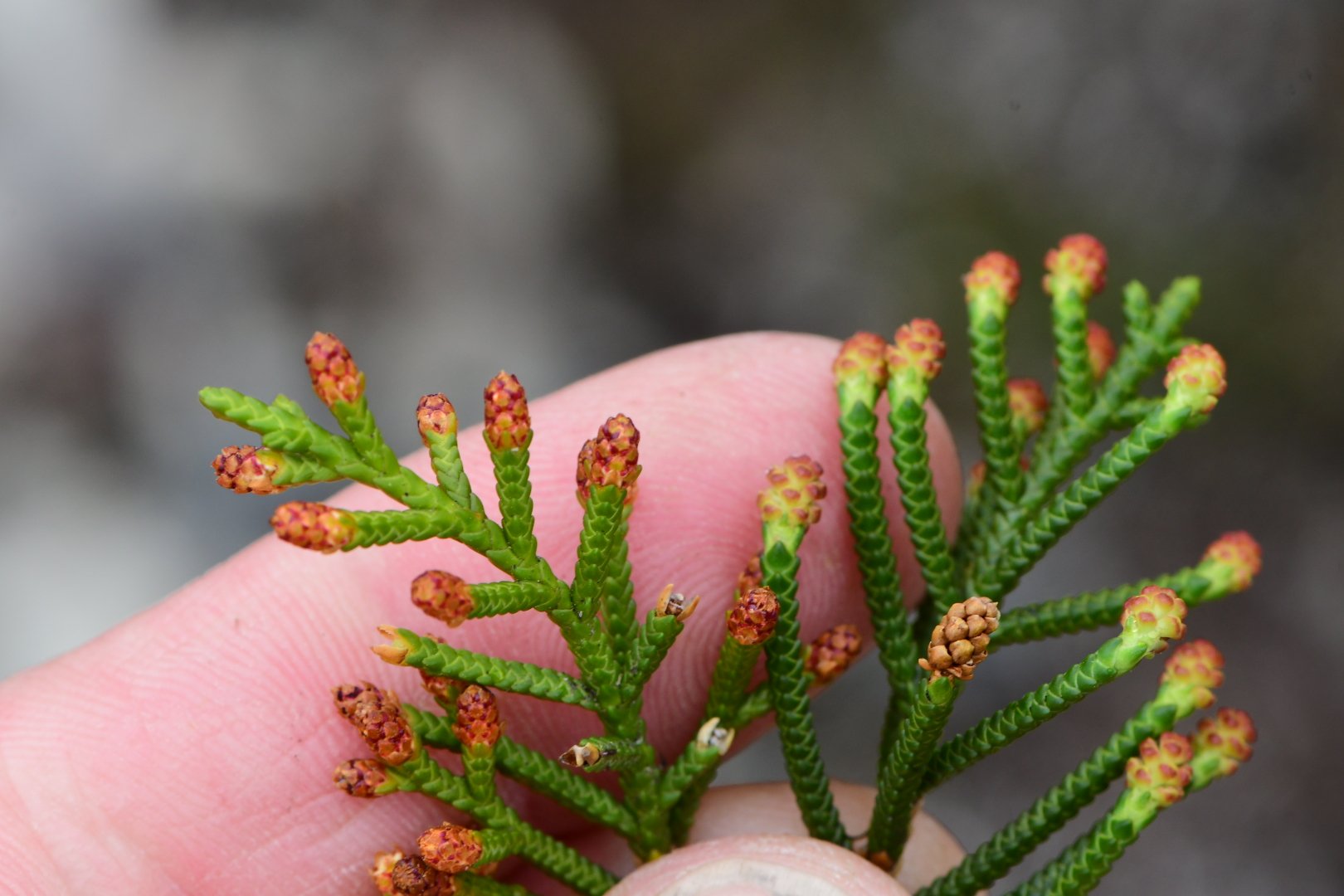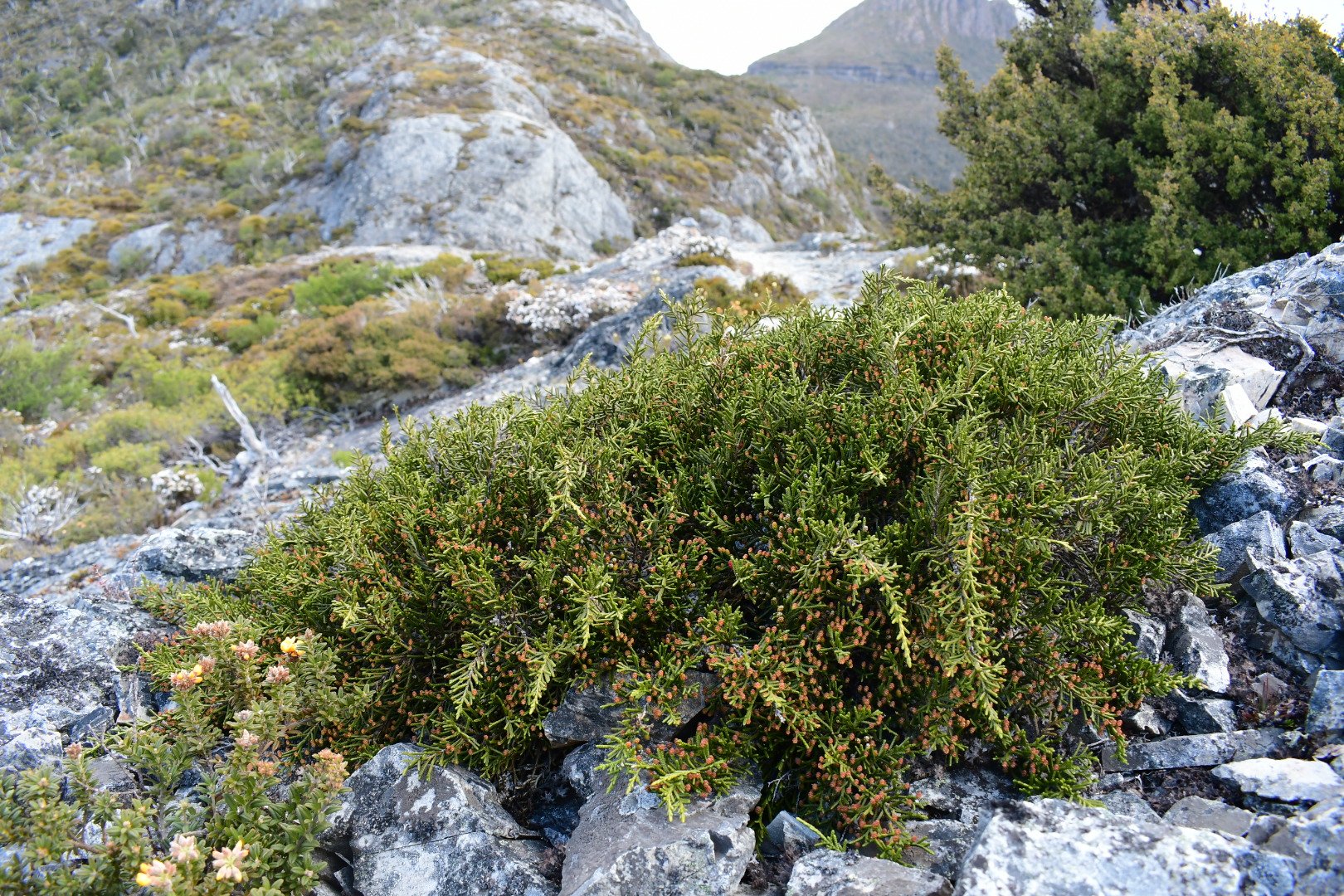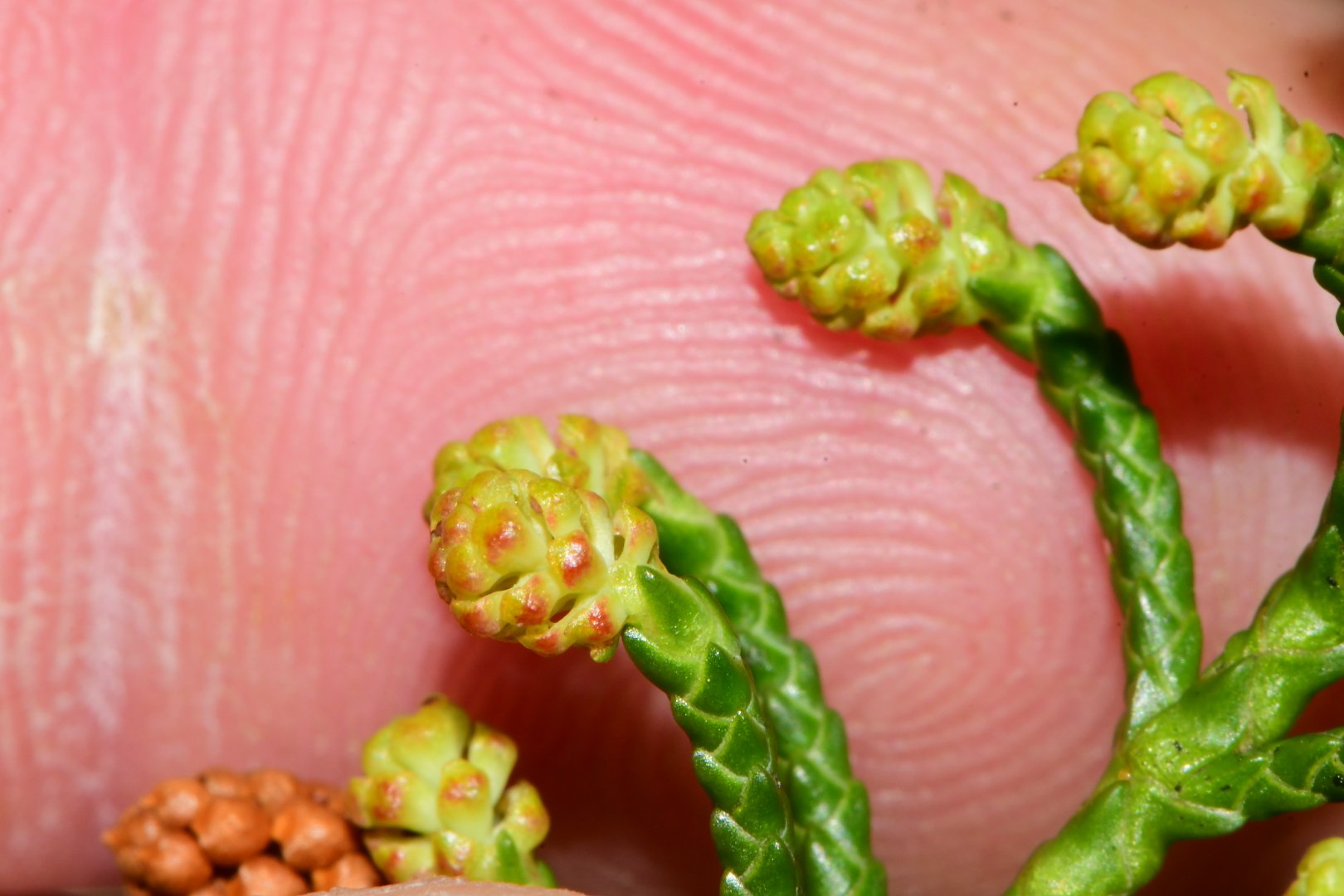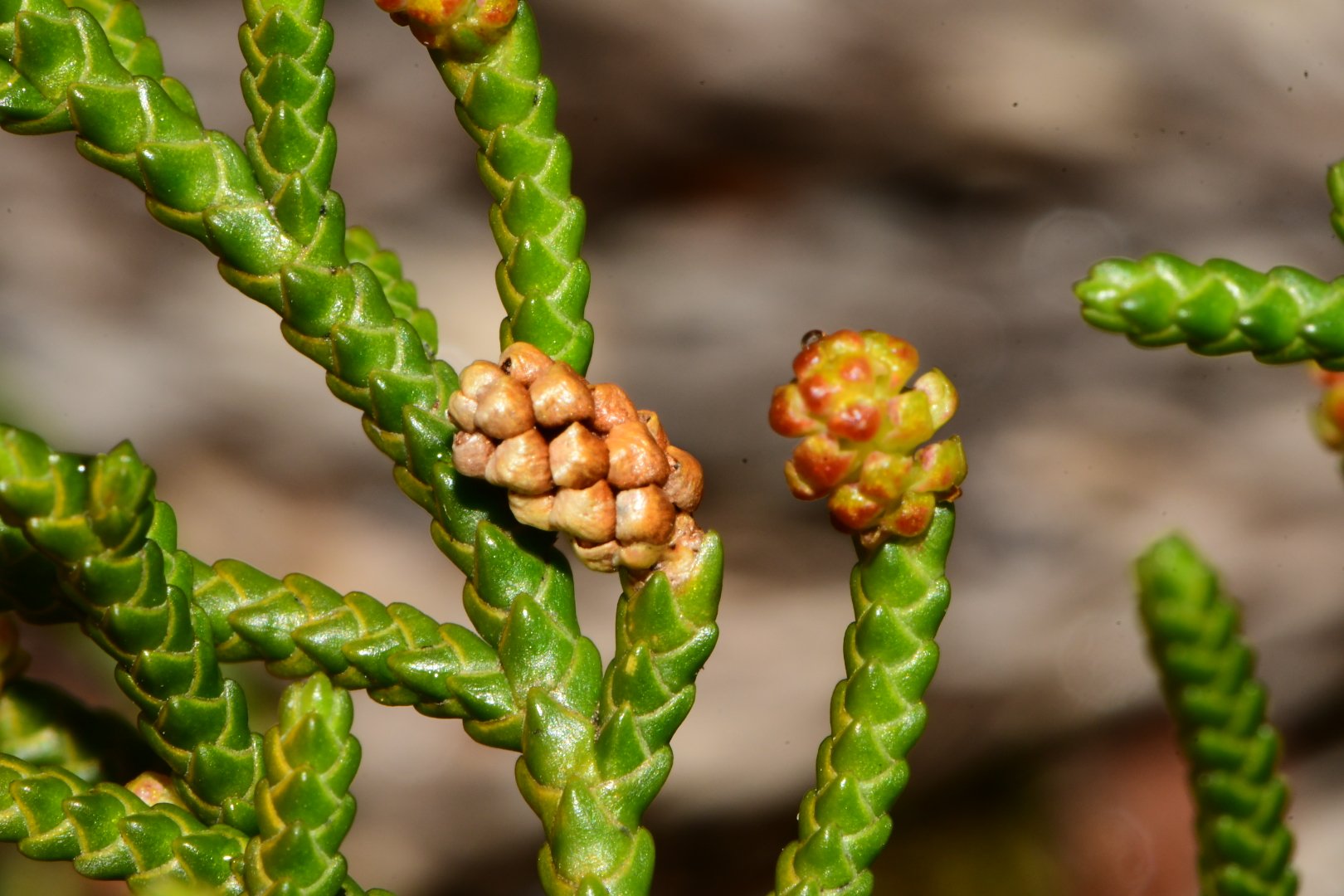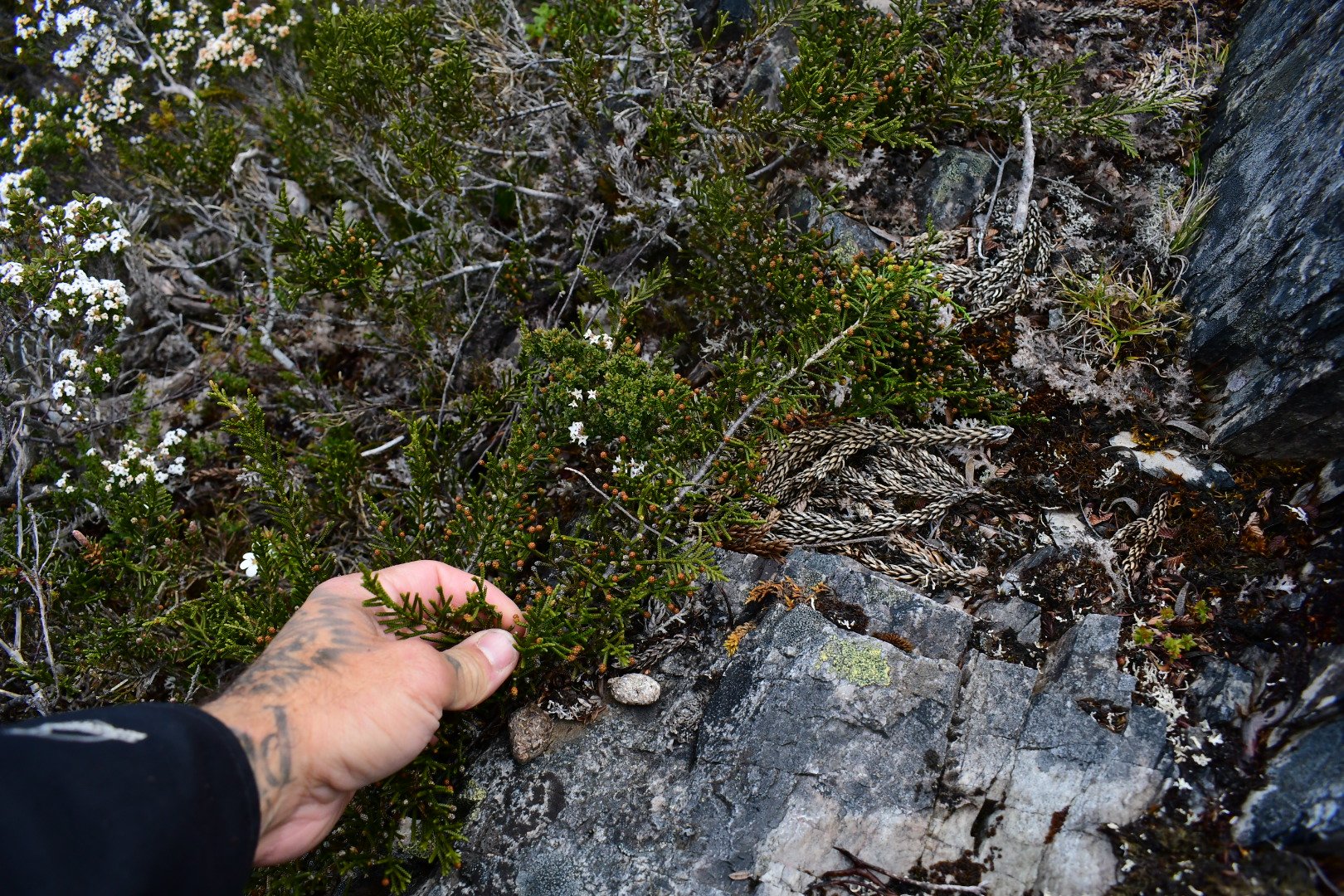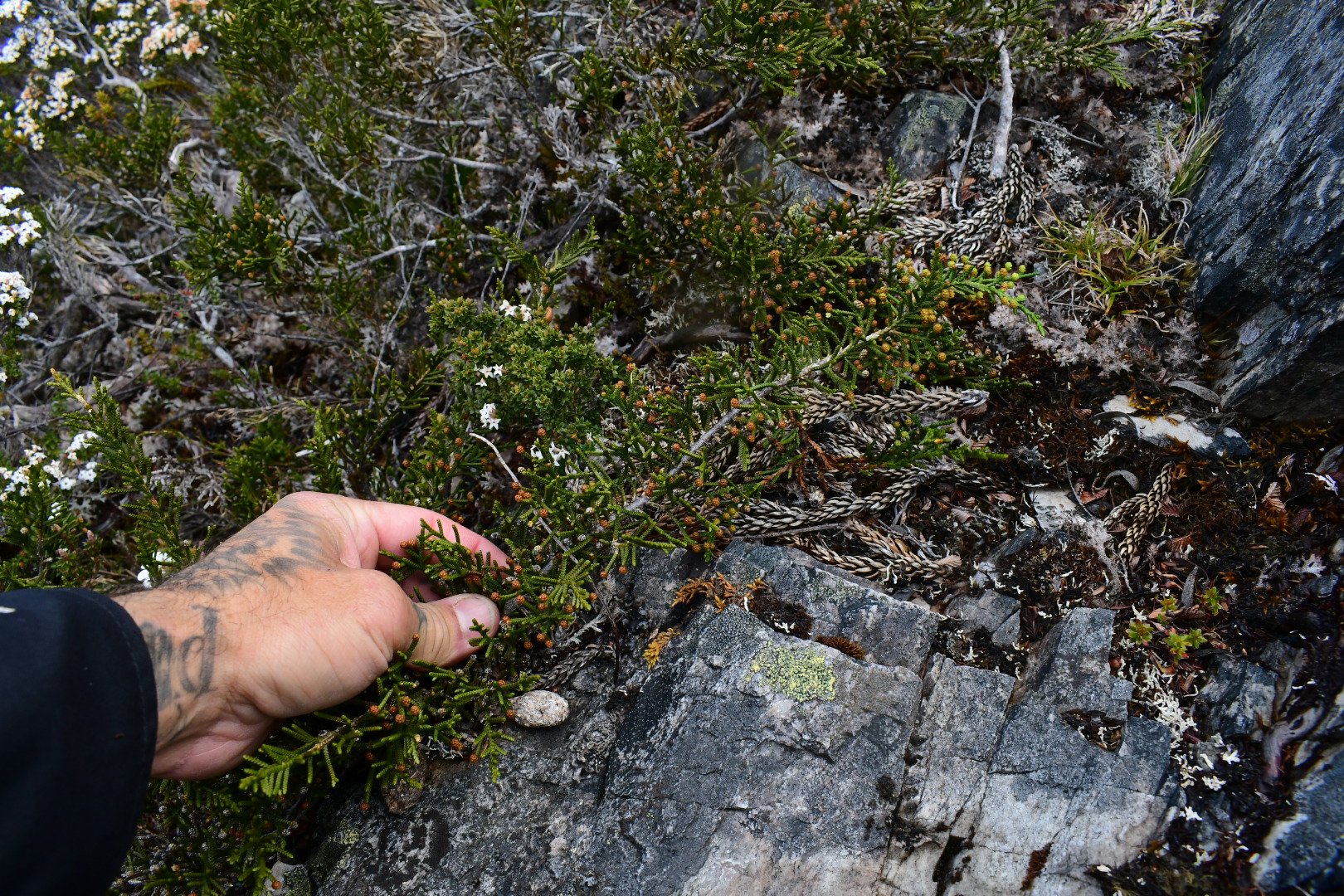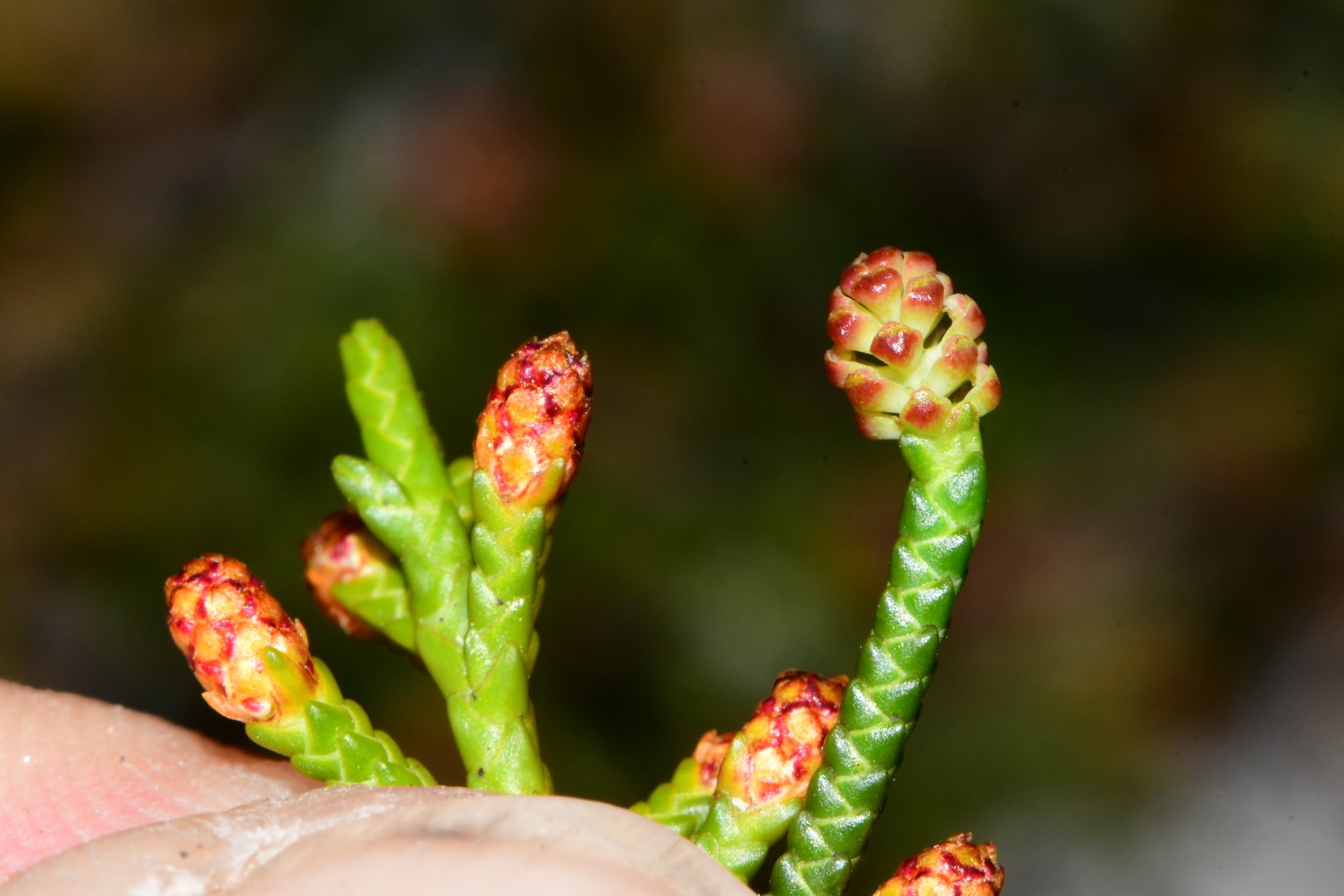The plant known as “strawberry pine” (which isn't a pine at all)
A "living fossil", now restricted to cold windswept mountains of Tasmania. This plant is a classic case of PALEOENDEMISM.
Microcachrys tetragona is a strange conifer colloquially known as "strawberry pine" , though it bears no relation to pines, which evolved much later than this family of conifers - Podocarpaceae - which occur primarily in the Tropics & Southern Hemisphere.
Microcachrys occurs at elevations of 3,000' or more, where it sprawls over rocks as a creeping plant, never taller than a few inches. The relatively modest elevation is high enough to be alpine here, as we are at roughly 43° South Latitude. Two weeks from the Southern Summer solstice and soon after I took this picture, we got hailed on. The temperature was about 38° fahrenheit.
The red cone (not a fruit, because this is not a angiosperm) is edible, but according to Woody tastes somewhat insufferably like conifer resin, though initially it was somewhat sweet.
Last photo is of the habitat, and a stand of both Athrotaxis cupressoides and Athrotaxis selaginoides, which are another ancient lineage of conifer.
I couldn't help standing here and thinking that at some point Microcachrys, as well as Athrotaxis, Nothofagus, many of the Epacrids (bluebe family, Ericaceae) and some of the alpine Eucalyptus (such E. coccifera and subcrenulata) MUST have composed some of the plant community of Antarctica before it fully froze over a few million years ago. And indeed it did - fossil pollen of both Microcachrys & Nothofagus are ubiquitous in Antarctic rocks
It's such a bizarre plant community, and the Highlands of Central Tasmania act as a time capsule to preserve so many of these species of conifer that were surely once more ubiquitous (or relatives of more ubiquitous taxa) and far more widespread, eons ago.
Getting this perspective on life on Earth is much do what we got me hooked on Botany in the first place.
